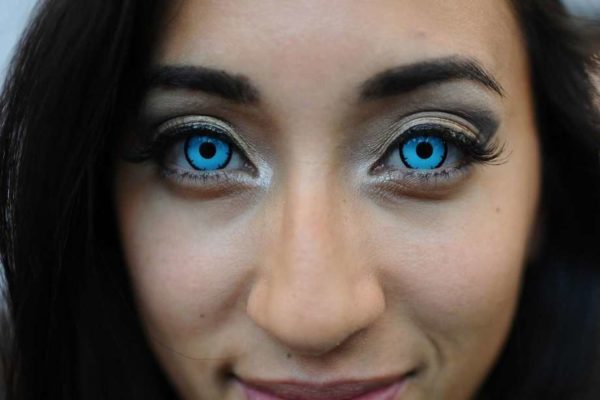
https://www.chron.com
By Alyson Ward
Published
Costume contact lenses are hard to resist on Halloween. Just pop a couple of contacts into your eyes and your face transforms into a monster, a demon, a corpse or a cat. For about $20 a pair, the lenses can make your eyes look anything but human.
Decorative lenses, which change the way your eyes look, have been around for a couple of decades — and they’ve become de rigeur for people who are serious about their costume game.
But think twice before you put any foreign objects on your eyeballs, optometrists say: Costume contact lenses can seriously damage the eyes, causing infections, scratches, abrasions and even corneal ulcers. They’re not safe, doctors say, unless you’ve had them fitted by a professional.
Costume contacts are easy to buy online and at beauty supply stores, novelty stores, Halloween stores and even some boutiques and salons. Some will even claim their lenses are FDA-approved.
Last month, the American Academy of Opthalmology issued a warning about the dangers of wearing them without a prescription. “They might seem like a no-fuss way to add something extra to a costume,” said the academy’s warning. “But contact lenses are medical devices.”
RELATED: Rain may stifle trick-or-treating on Halloween in Houston
The American Optometric Association has also weighed in against decorative contacts.
“She developed a corneal ulcer,” Pierce said, that’s an open sore on the cornea that can often lead to blindness.
The student’s ulcer was treatable and she experienced no permanent loss of vision, he said, but that was a stroke of luck. The ulcer was located just outside the patient’s major line of sight, he said: “A few millimeters more central, and she could have had permanent vision loss.”
A one-size-fits-all contact can cause serious pain and “permanent eye damage,” according to the American Academy of Opthalmology. Here’s what could go wrong:
Abrasions and scratches: The FDA warns against buying contacts without a prescription: Even if you don’t need corrective lenses, you need a prescription for the shape and the curvature of the particular contact you’ll be putting in your eye. If the lens isn’t designed for your eye, you can experience excruciating pain — and wearing it can lead to abrasions and corneal ulcers.
Blocked vision: If a lens isn’t designed to fit your eye, it can easily slip away from its centered position, Pierce said. And that can mean you won’t be able to see. Let’s say you put in lenses with a spiral or a spiderweb design — or black sclera contacts, which make your entire eye appear as an inky black vacuum.
“If it doesn’t center and it slides off and you’re driving down the road, what do you do?” Pierce said.
Bacterial infections: People who don’t normally wear contacts need to be taught how to handle them correctly, Pierce said — from washing their hands to using a disinfecting solution. Otherwise, you’re putting bacteria directly into your eyes.
According to a report the FDA published last year in the Journal of Forensic Sciences, a majority of unapproved, counterfeit contact lenses tested positive for the sorts of microbial contamination found in hospital waste of spoiled food. It’s even more risky when people share their lenses with another person, Pierce said — like toothbrushes and prescription meds, contacts should never be shared among friends or roommates.
Decorative lenses aren’t bad across the board, Pierce said. If they’re prescribed by a doctor, they’re fine — and they probably aren’t much more expensive than you’ll find them online.
“It’s not the decoration that’s the problem,” Pierce said. “It’s the fit of the lens itself.”
If you use some Halloween contacts this year and feel pain or have blurred vision, take action, he said. Take them out and go see an optometrist.
“The last thing you want to do is have a problem and think ‘This will get better on its own,” Pierce said. If your eyes are red and irritated or your vision is blurry, it could indicate a problem that might risk your vision — so take action right away, he and others recommend.
Halloween safety tips
Decorative contacts aren’t the only thing that can risk safety on Halloween. The American Optometric Association offers some tips for staying safe while you trick-or-treat:
1. Go trick-or-treating before it’s dark so you’ll have enough light to see curbs and sidewalk cracks. If you’re going to be out after dark, bring a flashlight.
2. Make sure your costume is bright or even has a reflective patch so drivers can see you on the streets.
3. Check the fit of your costume. Does it drag on the ground or floor? Are there hats or ties that block your vision? Look for problems that could create safety hazards outside.
4. Don’t allow kids to use bikes, skateboards, scooters or Rollerblades while they’re in costume.
5. Be careful with makeup. Use hypoallergenic makeup for general safety. Avoid using makeup in the eye area. And if false eyelashes are used, be sure to read the instructions carefully.
twitter.com/alysonward
